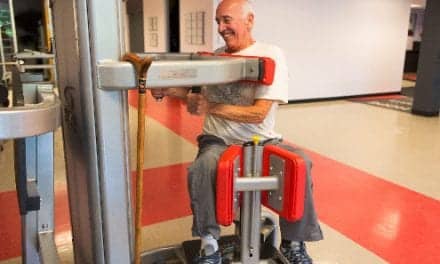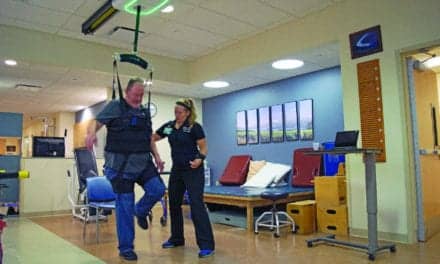A novel robotic walker invented by a team of researchers from the National University of Singapore’s (NSU) Faculty of Engineering is designed to help patients engage in therapy sessions to regain leg movement and natural gait. The system is also built to increase the productivity of physiotherapists and improve the quality of rehabilitation sessions.
A news release from the National University of Singapore states that the robotic walker was designed by a team of researchers led by Yu Haoyong, PhD, assistant professor, NUS Department of Biomedical Engineering. According to the release, the robotic walker is capable of supporting a patient’s weight while also offering the appropriate amount of force at the pelvis of the patient to help them walk with a natural gait. Additionally, quantitative data can be collected during the therapy sessions to allow doctors and physiotherapists to monitor the progress of the patient’s rehabilitation.
The release notes that the walker features six modules that include an omni-directional mobile platform, an active body weight support unit, a pelvic and trunk motion support unit, a suite of body sensors, a functional electrical stimulation unit, and an intuitive user control interface.
The body sensors are designed to measure the patient’s gait, to allow the walker to provide the appropriate amount of support to help the patient walk with a natural gait. Additionally, the electrical stimulation unit is engineered to deliver targeted current to stimulate the correct muscle at the correct time to facilitate joint movement. The walker can also provide assistive force, resistive force, and disturbance force depending upon the training requirements set by therapists.
The release reports that the patient is able to interact with the walker through a force sensor, which detects the user’s intent. The intelligent control system then uses this information, in addition to the gait information provided by the body sensors, to control the movement of the walker. The walker is also built to allow patients to practice gait movements by walking over ground rather than a treadmill and help collect data regarding gait kinematics and muscle activation pattern of the patient.
The robotic system is also intended to relieve physiotherapists from the physical strain of assisting patients with the exercises. Manual therapy, the release says, can be taken over by the robotic system while physiotherapists can focus on improved assessment and training guidance for patients. The device can also help reduce the number of physiotherapists required to conduct each rehabilitation session.
The release also notes that Yu is collaborating with the company Hope Technik to fine-tune the robotic walker. Yu plans to conduct clinical studies in order to validate the training effects on patients and to develop novel therapy regimens together with clinicians at the National University Hospital.
Yu emphasizes that, “Our vision is for the robotic walker to be installed at outpatient clinics and rehabilitation centers to benefit patients who need therapy sessions. There is also a possibility that patients can perform exercises in the comfort of their own homes.”
Photo Caption: Mun Kyung-Ryoul (left) and Dr Yu demonstrate the robotic walker, which allows patients to practise gait movements by walking on ground, enabling physiotherapists to focus on assessment, training guidance and motivating patients
Photo Credit: National University of Singapore
[Source: National University of Singapore]





